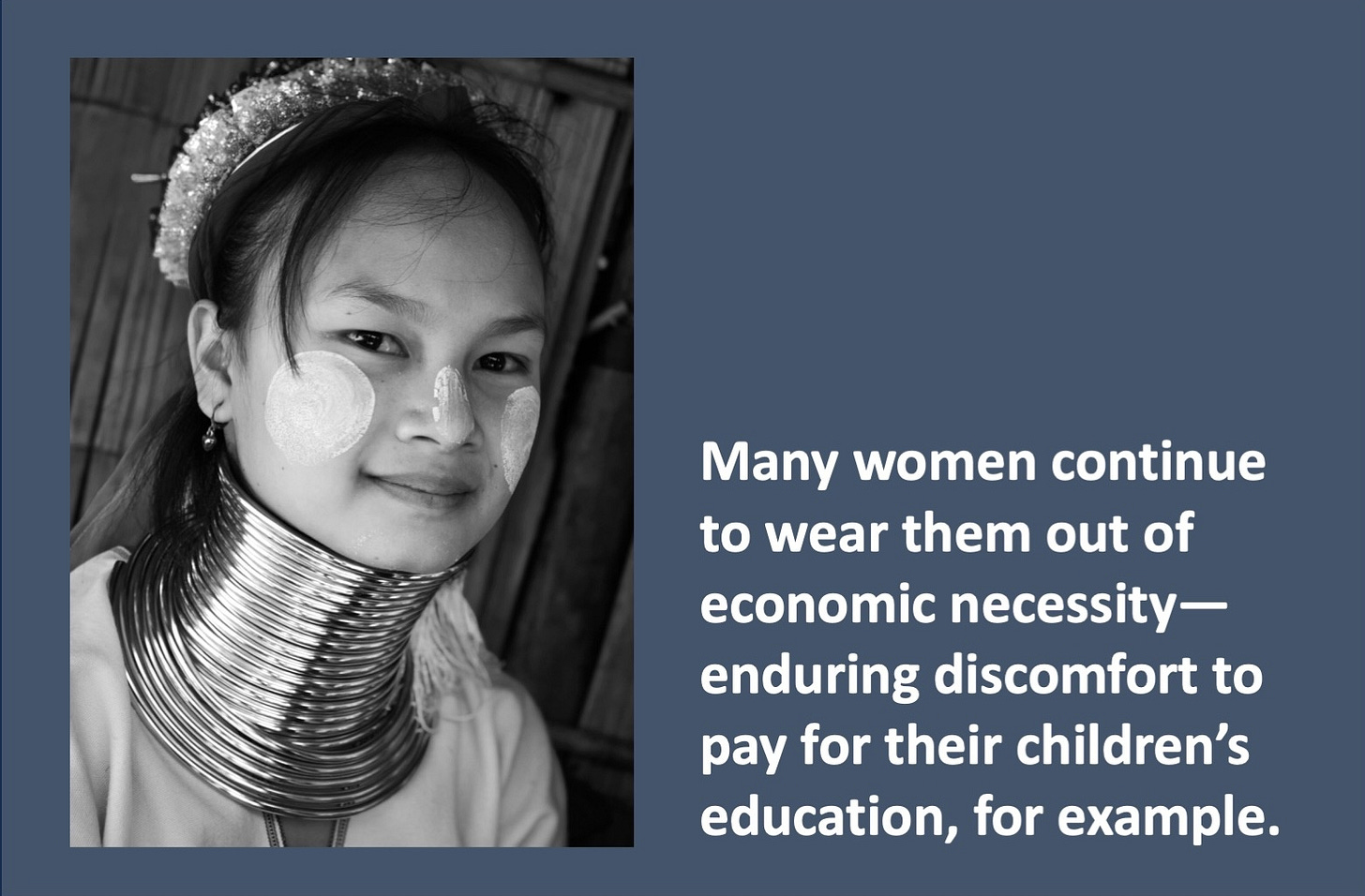XII. Authenticity dilemma
Part 12 of an international solo on ”Lanna“ by Lim Siang Jin. This online exhibition, comprising 20 parts, is from May 6 to June 5, 2025
IN NORTHERN Thailand, many tribal villages show tourists a carefully selected version of their culture. Behind traditional facades, I glimpse modern life carefully hidden from view. Their cultural practices have become both tradition and business, revealing a complex relationship with tourism. Visitors like me seek something “authentic,” while communities find practical ways to market their identity. An unspoken deal exists: they provide the experience we want, and we provide money they need. This relationship changes how traditions develop over time, creating something neither completely real nor completely fake. I leave wondering about their actual daily lives—the parts we visitors never get to see.
Performance behind the loom
HER FACE wears traditional thanaka paste alongside modern makeup—perfect for tourist photos. Her hands move across the natai loom in demonstrations she’s performed countless times. Visitors pretend to witness authentic culture, while she delivers rehearsed lines about her heritage to our driver and interpreter. We know the skill is real, but the setting is created for tourists. Between shows, she checks her smartphone—a glimpse of her modern life tourists don’t see. Her smile is professional—part of her job in what’s essentially tourism work. She lives in two worlds: the traditional one that pays her bills and the contemporary one she returns to after work.

Bamboo keeper
THE NATAI spinning tool ties her down like a factory machine—tradition that has become a kind of chain. Her repetitive movements resemble factory work, her body bound to this wooden tool for hours of performance. Factory workers have time clocks; she has tour bus schedules. Her ancestors used this tool because they had to; she uses it to earn a living from tourists. What looks like a timeless tradition may, in reality, be part of a modern trap. When the tourists leave, she’s no longer performing—but that doesn’t mean she’s free. The same market that turned her culture into a product may still control her. Real freedom may remain out of reach.

Rings of commerce
FOR KAREN village women living near global tourism routes, neck rings have shifted from cultural symbols to commercial attractions. Once tied to identity and tradition, the rings now primarily generate income. Many women continue to wear them out of economic necessity—enduring discomfort to pay for their children’s education, for example. More troubling, years of wearing the rings, adding more with time, have altered their neck muscles and bones so significantly that they can no longer remove them. They remain outsiders—visibly marked—even as they adopt modern aspirations and long for an ordinary life. Unless, of course, new paths are created to help them break free.
For more information, click on links: Stephen Menon, O Art Space Gallery, Lim Siang Jin and his art, here and here. For a detailed acknowledgment, click here




